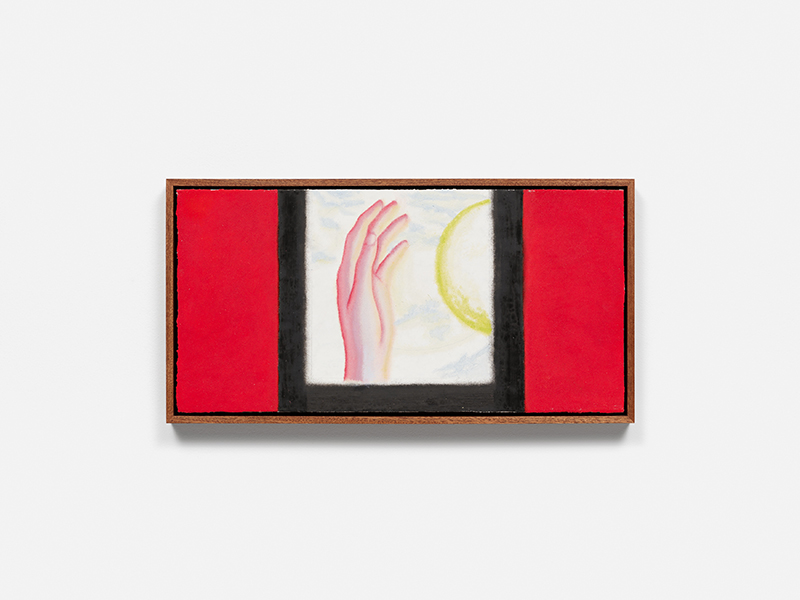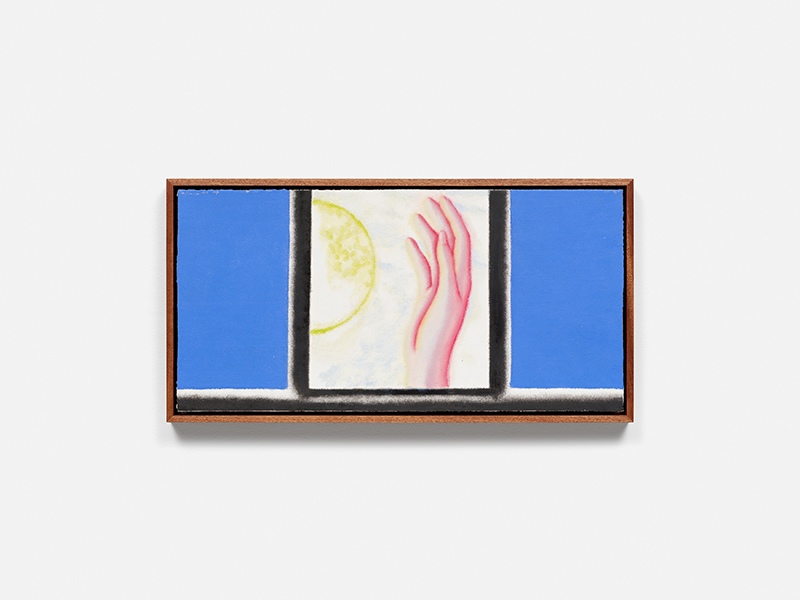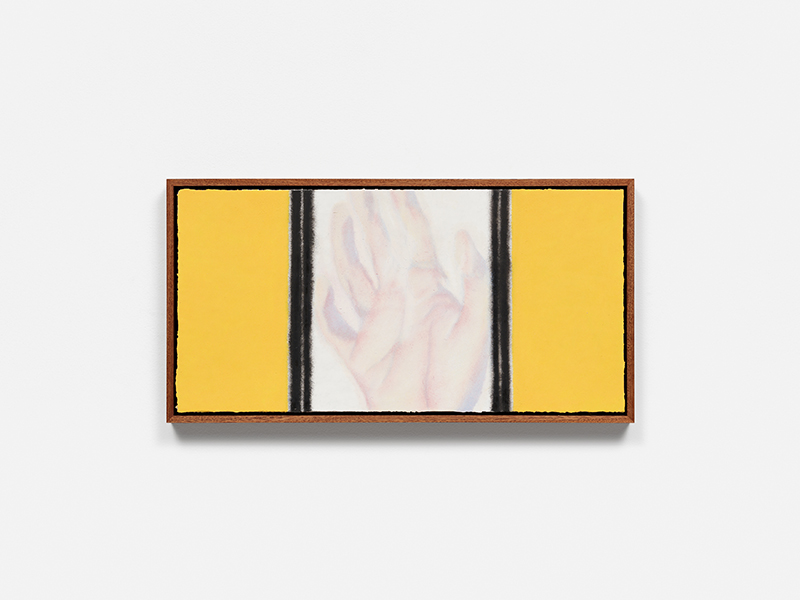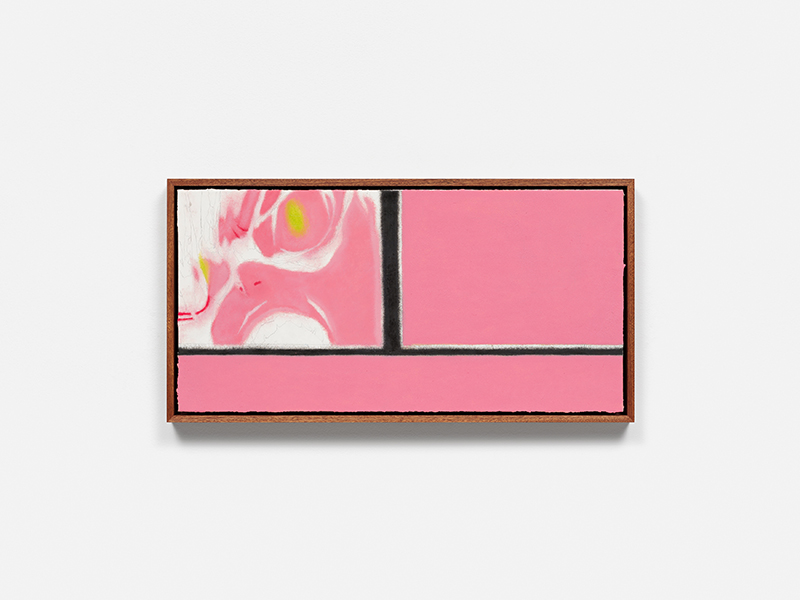Phillip John Velasco Gabriel
Artist in Residence | New Paintings

Phillip John Velasco Gabriel (b. 1983, Jacksonville, US) is a Filipino American, New York City based painter. He joined us on our 2022 summer residency session and produced a new body of work which was later exhibited in London and New York. Describing the paintings he said; “The work explores my interest in motifs which recur through art history. In my work, these can be identified as both bodily (hands) and decorative (abstraction/color-field). Specifically, I have been thinking about the influence Umbria’s medieval and early renaissance frescoes had on Sol LeWitt’s wall drawings – their application, color palette, and so forth. It’s interesting to consider how these two seemingly disparate moments in time informed each other and how they can continue to inform artists today.” Here he discusses the work with Mahler & LeWitt Studios curator Guy Robertson.

Left hand through the field, 2022 Oil on board on panel in artist's frame 11 x 21 inches

Right hand through the field, 2022 Oil on panel 11 x 21 inches

Beast Mode 2, 2022 Oil on panel 11 x 21 inches (28 x 53 cm)

Hand of Regret, 2022 Oil on panel 11 x 21 inches (28 x 53 cm)

Progressive Knife Oil on panel 11 x 21 inches

Beast Mode 1, 2022 Oil on panel 11 x 21 inches

Progressive Knife 3, 2022 Oil on panel 11 x 21 inches

Progressive Knife, 2022 Oil on panel 11 x 21 inches (28 x 53 cm)
NEW PAINTINGS
Guy Robertson: The combination of geometric abstraction with a representational style is right at the heart of your painting, the latter using source material from a range of eras and cultures – from Renaissance and medieval religious imagery to manga characters and screenshots from YouTube videos. What do you enjoy about this kind of standoff?
Phillip John Velasco Gabriel: It’s a question of the friction felt between them, but also seeing where they join. I’m very interested in the history of painting and the way that abstraction has made sense for different reasons to many different kinds of people: whether you’re looking at the reductive elements of endgame modernism, developing out of abstract expressionism in America, or even Sol LeWitt, whose work has always been an influence on my own. Having said this, all through college – knowing other painters and being friends with painters – I always felt that I’m not a ’painter’s painter’. Painters really love talking about certain painters – their techniques, references or gestures. I feel like I have more of a kinship with the world of graphic design. Before I looked at art, I was looking at album covers and ads. I think that that was my entry point. I also spent time with comic books and visual culture on a broader lever. Much more than going to museums.I enjoyed playing with the ideas I saw there. As I learnt more about art, I started to see overlaps that interested me.
GR: In graphic design the traditional motto is that form follows function. The one subservient to the other. Where do you start with these paintings?
PJVG: Usually I’ll have a general idea of how the imagery I want to use is going to be framed off. Once I’ve got that, I try to create a system or a formula – we’re talking calculating dimensions, inches, from one element to another – and trying to find a consistency and a balance. I like to create this kind of structure, but then let accidents happen within it.
GR: The scale of these paintings is reminiscent of movie formats and their partitioning is like that of a comic strip. There’s a real sense of rhythm, or action, within and between the panels, emphasised by the fact that the subjects often only half appear, or disappear. What helps you decide the push and pull in the structure of each painting and what to fill in or leave out?
PJVG: A lot of my paintings have a widescreen cinema format. In terms of rhythm: it changes as it goes. That’s one of the key facets of my painting: choosing what parts to reveal, and what parts to leave blank. It really is a kind of discovery and it comes through sitting with the work, spending time with it. I often think about my paintings in terms of vignettes which, traditionally, are frontispiece illustrations whose borders gradually shade off at the edges, or leave no definitive border. They remind me of the way dreams or memories come in and out of focus, or consciousness. To me, these paintings are like windows or screens, perceived through a haze that comes and goes.
GR: In Spoleto, you’ve been looking at fresco painting a lot. What have you taken from that?
PJVG: I like the way that time has created its own abstractions in the frescoes – the images get faded, or partially destroyed. That’s really interesting. In the quattrocento painting in Assisi, I could sympathise a lot with the painters getting things wrong – architectural details, perspective especially. It reminded me of Giorgio de Chirico’s painting. The wrongness is its own kind of surrealism and says something important regarding correspondences between imagined and lived worlds. My own work relies a lot on surreal disruptions – I often zoom in on small portions of images using screenshots, for example. It’s a way of seeing things.
GR: You were brought up in a Catholic household and religious imagery often finds its way into your work. You spoke with our art historian in residence, Stephaine Wisowaty, whose specialism is quattrocento painted processional crosses.
PJVG: Yes we had interesting conversations, particularly regarding the traditions of representing christ in a fragmented manner – through specific body parts or objects associated with him, known as the Arma Christi. We also discussed the tradition of reliquaries, where you are essentially putting these things into boxes, framing them off in order to elevate them.
Phillip John Velasco Gabriel is represented by Ramiken in New York and And Now in Dallas. Describing his practice Ramiken have written, “Gabriel draws inspiration from the hieratic compositions of Catholic painting from the Renaissance, the geometric organization of high Modernism as well as the color field painting styles that evolved from it, and the mashup paint jobs of Jeepneys in the Phillipines. His subjects include agate landscapes, Chinese dream stones, Japanese anime, hypnotic Youtube videos, erotic cartoons, x-rays, thermal imaging, blue volcanic fire, and a haunting portrait of a social humanoid robot named Sophia. Each work is a collection of eidolons, ideals that refuse to coalesce, existing instead as evanescent phantoms of the human form, animated by an eternal mood.” Recent exhibitions: Phillip John Velasco Gabriel, AND NOW, Dallas (2022), Vigilator, Ramiken, New York (2021), Phillip John Velasco Gabriel, AND NOW, Dallas (2020), Eidolons, Ramiken, New York (2019).


